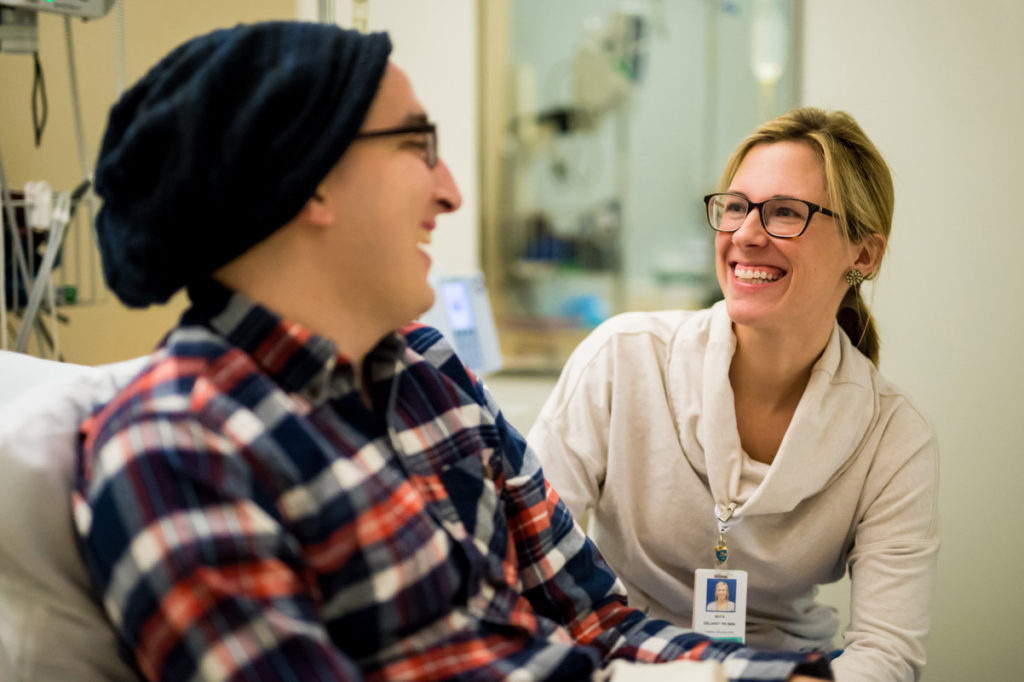S. H. Andy Yun, PhD, a principal investigator for the Wellman Center for Photomedicine at Massachusetts General Hospital, created a process for inserting tiny lasers into cells, which could help with researching tumors and the immune system. Dr. Yun is a Patricia and Scott Eston MGH Research Scholar 2016-2021.

What is your most exciting research?
My team and I invented a tiny living laser that can emit a very narrow band of light. We grow cells in a Petri dish. Then, we sprinkle our laser particles — a semiconductor material with a special coating — onto the cells. Within a day, the cells consume the laser particles and shine with color when placed under a special microscope. The laser labels them with a color that scientists use to track their movements. It’s like a “bar code” for research.
Our invention solves a problem: Today’s color-coding technology only gives scientists three colors for labeling.
For example, we can study groups of immune cells, but not individual cells because there are more cells than colors available to label them. Our new technology can create up to a million different colors — expanding research possibilities.
Beyond cancer, I think this tool could help scientists understand how the immune system functions …
How would using tiny lasers help scientists?
One way to understand how cells work is to think of the United States divided into blue and red political preferences. Yet, within each preference, voters make decisions based on individual motivations. Cells are the same way. Within one tumor there can be 100 to 1,000 different types of cells. And even within subtypes of cells, like immune and skin cells, like voters, those cells can act individually. This can make tumors difficult to treat because cancer drugs will target some cells, but not others.
If we could study tumor cells individually, we could learn a great deal more about our biology and understand how cells work. Maybe we could devise better drugs to halt tumor growth. Beyond cancer, I think this tool could help scientists understand how the immune system functions and answer questions about human biology.
How did you become interested in this type of research?
I am a physicist by training, so I had worked with lasers. My first exposure to the biomedical field began in 2003 at Mass General, where my lab had been imaging tissue and watching how cells behave in tumors and blood vessels.

• The Power of Bold Giving and Big Ideas
• Trailblazing Engineer Continues Advocacy for Gender Equality in Science
• Heart Attack Prevention Motivates MGH Research Scholar
I realized I could not gather the details I wanted with the current tools. It was a long journey of trying different materials to get from a larger laser, like the one found in an office laser pointer to the one-micron laser we created. (One micron is about a hundredth of the diameter of a human hair).
What is the future of this research?
Right now, our work is in the animal model phase. The materials we use will need to undergo rigorous safety testing before they will be approved for human use. My prediction for 20 years from now, and my wildest dream, would be for us to come up with a way to program a cell to create its own laser and self-label itself. It’s not impossible.
How did you feel when you were selected as an MGH Research Scholar?
I felt extremely grateful that Mass General uses this award to support basic research and technology developments and that the MGH Research Scholar selection committee chose my work. The MGH Research Scholar award helped me chase my idea for tiny lasers — an idea I was not sure would be successful. After three years, with the award’s support, we have made tremendous progress. We are writing papers with strong data. I extended my original idea and submitted a proposal to the National Institutes of Health (NIH) and received an NIH Pioneer Award in 2016, an important recognition that will help me further this line of research.
To support the MGH Research Scholars program, please contact us.
The Research Institute: Saving Lives Through Science
 The Massachusetts General Hospital Research Institute is the largest hospital-based research program in the United States, with a community of more than 8,500 people working across more than 30 institutes, centers and departments.
The Massachusetts General Hospital Research Institute is the largest hospital-based research program in the United States, with a community of more than 8,500 people working across more than 30 institutes, centers and departments.
Our researchers work side-by-side with physicians to pioneer the latest scientific advancements for curing disease and healing patients in Boston, across the United States and around the world.
To learn more about the Research Institute, please visit our website.






